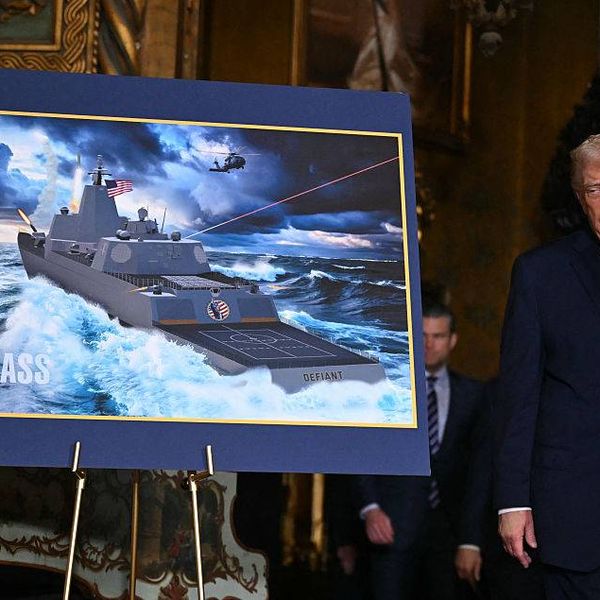Will Obama Follow Bush Down the Made-Up Torture Loophole?
Twenty years ago, the United States ratified an international treaty banning the use of torture and cruelty worldwide. Three successive American presidents, with bipartisan support, threw their weight behind the treaty - Ronald Reagan signed it in 1988, George H.W. Bush approved it, and Bill Clinton signed implementing legislation into law in 1994.
Twenty years ago, the United States ratified an international treaty banning the use of torture and cruelty worldwide. Three successive American presidents, with bipartisan support, threw their weight behind the treaty - Ronald Reagan signed it in 1988, George H.W. Bush approved it, and Bill Clinton signed implementing legislation into law in 1994.
But less than a decade later, the administration of George W. Bush took it apart. To justify the torture of prisoners in American custody abroad, the Bush administration decided that the sweeping prohibitions enshrined in the Convention Against Torture, and Other Cruel, Inhuman or Degrading Treatment or Punishment just didn't apply.
President Obama took a critical step on his second day in office when he signed an executive order reinforcing the ban on torture. But the legacy of the torture program is still with us in many ways. This past weekend, we learned from a New York Times report that the Obama administration is considering reaffirming the Bush-era position that the ban on cruel treatment doesn't apply when the United States is operating abroad.
This is nothing more than a fabricated loophole that does terrible damage to one of the world's most important human rights instruments. Simply put, the ban against torture and ill-treatment is universal and applies everywhere the U.S. government exercises, directly or indirectly, de facto or de jure control over people in detention. We echo the call of the New York Times editorial board to "close the overseas torture loophole."
The United Nations will review American compliance with the convention in November. Ahead of the review, the ACLU has submitted a report to the U.N. Committee Against Torture, highlighting the areas in which the U.S. government has failed to uphold its human rights obligations under the convention.
In the meanwhile, we continue to wait for the release of the Senate Intelligence Committee's report on the CIA torture program. The summary of the comprehensive report, the product of years of work, is being held up by negotiations over the executive branch's excessive redactions, no doubt attempts to keep secret some of the most damning findings and evidence of the terrible crimes our country committed.
In case you're rusty, we are releasing today an interactive infographic that covers most of the top architects of the U.S. torture program. You'll see plenty of familiar faces from the highest levels of power.
So brush up - because the torture secrets are coming. Accountability, we hope, will follow.
An Urgent Message From Our Co-Founder
Dear Common Dreams reader, The U.S. is on a fast track to authoritarianism like nothing I've ever seen. Meanwhile, corporate news outlets are utterly capitulating to Trump, twisting their coverage to avoid drawing his ire while lining up to stuff cash in his pockets. That's why I believe that Common Dreams is doing the best and most consequential reporting that we've ever done. Our small but mighty team is a progressive reporting powerhouse, covering the news every day that the corporate media never will. Our mission has always been simple: To inform. To inspire. And to ignite change for the common good. Now here's the key piece that I want all our readers to understand: None of this would be possible without your financial support. That's not just some fundraising cliche. It's the absolute and literal truth. We don't accept corporate advertising and never will. We don't have a paywall because we don't think people should be blocked from critical news based on their ability to pay. Everything we do is funded by the donations of readers like you. Will you donate now to help power the nonprofit, independent reporting of Common Dreams? Thank you for being a vital member of our community. Together, we can keep independent journalism alive when it’s needed most. - Craig Brown, Co-founder |
Twenty years ago, the United States ratified an international treaty banning the use of torture and cruelty worldwide. Three successive American presidents, with bipartisan support, threw their weight behind the treaty - Ronald Reagan signed it in 1988, George H.W. Bush approved it, and Bill Clinton signed implementing legislation into law in 1994.
But less than a decade later, the administration of George W. Bush took it apart. To justify the torture of prisoners in American custody abroad, the Bush administration decided that the sweeping prohibitions enshrined in the Convention Against Torture, and Other Cruel, Inhuman or Degrading Treatment or Punishment just didn't apply.
President Obama took a critical step on his second day in office when he signed an executive order reinforcing the ban on torture. But the legacy of the torture program is still with us in many ways. This past weekend, we learned from a New York Times report that the Obama administration is considering reaffirming the Bush-era position that the ban on cruel treatment doesn't apply when the United States is operating abroad.
This is nothing more than a fabricated loophole that does terrible damage to one of the world's most important human rights instruments. Simply put, the ban against torture and ill-treatment is universal and applies everywhere the U.S. government exercises, directly or indirectly, de facto or de jure control over people in detention. We echo the call of the New York Times editorial board to "close the overseas torture loophole."
The United Nations will review American compliance with the convention in November. Ahead of the review, the ACLU has submitted a report to the U.N. Committee Against Torture, highlighting the areas in which the U.S. government has failed to uphold its human rights obligations under the convention.
In the meanwhile, we continue to wait for the release of the Senate Intelligence Committee's report on the CIA torture program. The summary of the comprehensive report, the product of years of work, is being held up by negotiations over the executive branch's excessive redactions, no doubt attempts to keep secret some of the most damning findings and evidence of the terrible crimes our country committed.
In case you're rusty, we are releasing today an interactive infographic that covers most of the top architects of the U.S. torture program. You'll see plenty of familiar faces from the highest levels of power.
So brush up - because the torture secrets are coming. Accountability, we hope, will follow.
Twenty years ago, the United States ratified an international treaty banning the use of torture and cruelty worldwide. Three successive American presidents, with bipartisan support, threw their weight behind the treaty - Ronald Reagan signed it in 1988, George H.W. Bush approved it, and Bill Clinton signed implementing legislation into law in 1994.
But less than a decade later, the administration of George W. Bush took it apart. To justify the torture of prisoners in American custody abroad, the Bush administration decided that the sweeping prohibitions enshrined in the Convention Against Torture, and Other Cruel, Inhuman or Degrading Treatment or Punishment just didn't apply.
President Obama took a critical step on his second day in office when he signed an executive order reinforcing the ban on torture. But the legacy of the torture program is still with us in many ways. This past weekend, we learned from a New York Times report that the Obama administration is considering reaffirming the Bush-era position that the ban on cruel treatment doesn't apply when the United States is operating abroad.
This is nothing more than a fabricated loophole that does terrible damage to one of the world's most important human rights instruments. Simply put, the ban against torture and ill-treatment is universal and applies everywhere the U.S. government exercises, directly or indirectly, de facto or de jure control over people in detention. We echo the call of the New York Times editorial board to "close the overseas torture loophole."
The United Nations will review American compliance with the convention in November. Ahead of the review, the ACLU has submitted a report to the U.N. Committee Against Torture, highlighting the areas in which the U.S. government has failed to uphold its human rights obligations under the convention.
In the meanwhile, we continue to wait for the release of the Senate Intelligence Committee's report on the CIA torture program. The summary of the comprehensive report, the product of years of work, is being held up by negotiations over the executive branch's excessive redactions, no doubt attempts to keep secret some of the most damning findings and evidence of the terrible crimes our country committed.
In case you're rusty, we are releasing today an interactive infographic that covers most of the top architects of the U.S. torture program. You'll see plenty of familiar faces from the highest levels of power.
So brush up - because the torture secrets are coming. Accountability, we hope, will follow.

